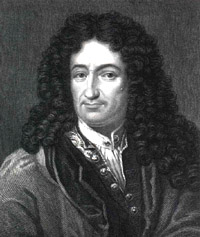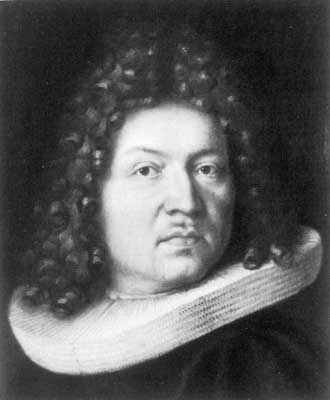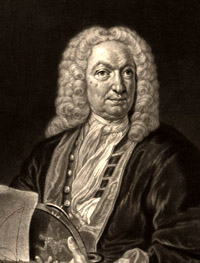- About MAA
- Membership
- MAA Publications
- Periodicals
- Blogs
- MAA Book Series
- MAA Press (an imprint of the AMS)
- MAA Notes
- MAA Reviews
- Mathematical Communication
- Information for Libraries
- Author Resources
- Advertise with MAA
- Meetings
- Competitions
- Programs
- Communities
- MAA Sections
- SIGMAA
- MAA Connect
- Students
- MAA Awards
- Awards Booklets
- Writing Awards
- Teaching Awards
- Service Awards
- Research Awards
- Lecture Awards
- Putnam Competition Individual and Team Winners
- D. E. Shaw Group AMC 8 Awards & Certificates
- Maryam Mirzakhani AMC 10 A Awards & Certificates
- Two Sigma AMC 10 B Awards & Certificates
- Jane Street AMC 12 A Awards & Certificates
- Akamai AMC 12 B Awards & Certificates
- High School Teachers
- News
You are here
Pitfalls and Potential Solutions to Your Primary Source Problems: Dammit, Jim, I'm a mathematician, not a detective.*
So you’ve decided on a topic. You now need to find
primary sources, but where to look first?
Example
This one you just can’t escape. Unless you’re a historian of mathematics, extremely well-versed in a certain topic, or just very lucky, you probably don’t have a file of primary sources appropriate to use in a classroom. Every project, PSP, anecdote, or story I use has required some outside research, since undergraduate texts treat math content like it is in the public domain. After all, most of our classes involve mathematics that is well over 100 years old. So you must look elsewhere. But where?
It may help to know that . . .
- Mathematical sourcebooks collect and translate (and often annotate) important mathematical works. While some are dedicated to specific topics—I’ve made extensive use of George Birkhoff's A Source Book in Classical Analysis [1973]—cultures, and eras, I have found John Fauvel and Jeremy Gray’s The History of Mathematics: A Reader[8] [1987] and Ron Calinger’s Classics of Mathematics [1994] to be the most general and useful.
- History of mathematics textbooks often have very robust bibliographies and are a great place to start. I have found Morris Kline’s Mathematical Thought from Ancient to Modern Times [1990] and Victor Katz’s History of Mathematics [1993] to be the most helpful.
- While modern popular textbooks may not provide a good starting point, older textbooks are temporally much closer to the discovery (or creation) of the mathematics and hence are more likely to give credit for specific results.
- Conversely, sometimes later editions of a book or reprints in a collection of works contain additional useful information.
- Biographies of the mathematician in question are another great spot to look for sources and memorable stories.
- While not the norm, there are also modern textbooks (often with titles of the form ________ from a Historical Perspective), which have robust citations to primary sources. They exist in many areas of math, but since I’ve been concentrating on analysis and differential equations, I’ve found Analysis by its History [Hairer and Wanner 2008] and Ordinary Differential Equations [Ince 1944] to be the most helpful as I developed materials for my classes.
- Secondary sources in journals offer another good place to look. Harvard’s library states, “Secondary sources were created by someone who did not experience first-hand or participate in the events or conditions you’re researching. For a historical research project, secondary sources are generally scholarly books and articles. A secondary source interprets and analyzes primary sources” [Harvard Library 2023]. The most useful secondary sources that I’ve found have been in journals such as Historia Mathematica, Bulletin of the AMS, Mathematics Magazine, Archive for History of Exact Sciences, American Mathematical Monthly, The Mathematical Gazette, The British Journal for the History of Mathematics, The British Journal for the Philosophy of Science, and The British Journal for the History of Science. Even the non-historical articles in these journals often include robust background and bibliographies. And, of course, be sure to check out Convergence.



Figure 3. Gottfried Wilhelm Leibniz, Jacob Bernoulli, and Johann Bernoulli. Convergence Portrait Gallery.
- You may find contradictory information. When trying to determine who solved the “Bernoulli differential equation” I went to the sources I described above [Ince 1944; Hairer and Wanner 2008; Katz 1993] and unfortunately found different information in each place! What follows is from the resulting publication [Parker 2013].
Here's a mystery to ponder: who first solved the Bernoulli differential equation
\[\frac{dy}{dx} +P(x) y = Q(x) y^n ? \]
Was it Gottfried Wilhelm Leibniz (1646–1716)—the German mathematician, philosopher, and developer of the calculus? According to Ince [1944, p. 22], “The method of solution was discovered by Leibniz, Acta Erud. 1696, p.145.”
Or was it Jacob (James, Jacques) Bernoulli (1655–1705)—the Swiss mathematician best known for his work in probability theory? Whiteside [1981, p. 97], in his notes to Newton's papers, states “The ‘generalized de Beaune’ equation \(dy/dx = py+q y^n\) was given its complete solution in 1695 by Jakob Bernoulli.”
Or was it Johann (Jean, John) Bernoulli (1667–1748)—Jacob’s acerbic and brilliant younger brother? Pierre Varignon (1654–1722) [Hairer and Wanner 2008, p. 140] wrote to Johann Bernoulli in 1697 that “In truth, there is nothing more ingenious than the solution that you give for your brother’s equation; and this solution is so simple that one is surprised at how difficult the problem appeared to be: this is indeed what one calls an elegant solution.’
Was it all three? Kline [1990, p. 474] says, “Leibniz in 1696 showed it can be reduced to a linear equation by the change of variable \(z=y^{1-n}\). John Bernoulli gave another method. In the Acta of 1696 James solved it essentially by separation of variables.”
I, personally, love it when this happens, as there is now an opportunity to add clarity to the literature. If you’re curious, Jacob proposed the problem. A solution was published by Leibniz, though all the pertinent details required to actually carry out the technique were omitted. Later Johann gave those details, along with a second solution using variation of parameters.
- Don’t forget that Google (or your own favorite search engine) is a thing. I’m sure you’re not surprised that I usually start there. I’ve also found that the librarians at my institution have great ideas for tracking down sources.
- You are not alone. You have friends you didn’t even know about. The Primary Source “group” of mathematicians is extremely welcoming and excited to help others see the benefits of using primary sources in their classrooms. They are members of the above-mentioned TRIUMPHS Society, the International Study Group on the Relations between the History and Pedagogy of Mathematics (HPM), or the History of Mathematics Special Interest Group of the MAA (HOM SIGMAA). You can reach out to the authors and editors of papers you find interesting, or contact the organizers of and speakers in conference sessions who reference primary sources. I have found all to be very generous with time and advice when I get stuck. I won’t speak for everyone else, but you can always reach out to me.[9]
[*] Whether you're familiar with the catchphrase that inspired this subtitle or not, you'll want to take a look at this YouTube video featuring clips of Dr. McCoy from the original Star Trek TV series.
[8] An updated version of this sourcebook is also available, [Barrow-Green et al. 2022].
[9] The editors of Convergence might have opinions about how quickly I’ll respond. Janet, whatever you asked me for, I’m working on it.
Adam E. Parker (Wittenberg University), "Pitfalls and Potential Solutions to Your Primary Source Problems: Dammit, Jim, I'm a mathematician, not a detective.*," Convergence (December 2023)




